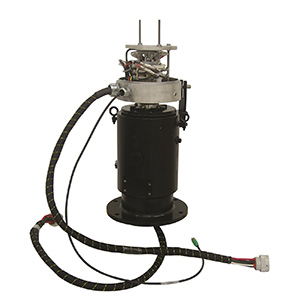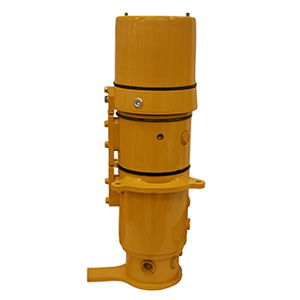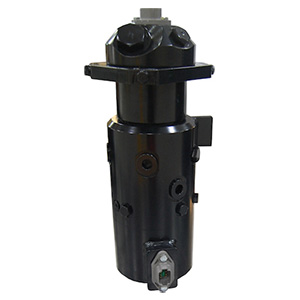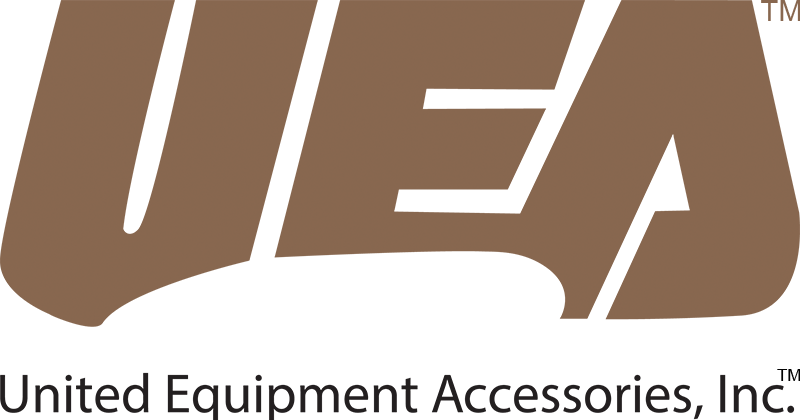This article originally appeared in Lift & Access, September – October 2017.
-By Brady Haugo
Hydraulic Engineering Supervisor
United Equipment Accessories, Inc.
A separated-style hydraulic swivel and electrical slip ring is usually best for truck-mounted aerial lifts, but you need to assess each application.
The booms of truck-mounted aerial lifts are commonly mounted on turrets that permit unlimited continuous rotation so operators can move a boom-mounted work platform to any desired position.

The key to unlimited rotation, or swing, is the rotational joint that carries hydraulic power, electrical power, and control signals through the pivot without tangling up hoses or wires.
The rotational joint consists of the slewing bearing, which takes the brunt of the mechanical load, plus the hydraulic swivel and electrical slip ring that transfer fluid power, electrical power, and control signals. Together, the hydraulic swivel and electrical slip ring are commonly referred to as a combination unit or rotary joint.

Operating an aerial lift platform requires the operator to control the platform’s position, direction, and speed using controls in the platform. The controls send electrical signals that open and close hydraulic valves to move the turret, boom, and platform.
The electrical slip ring and hydraulic swivel work together to get the operator’ input signal from the control level to the hydraulic control valve, and then to get fluid power from the hydraulic pump and control valve to the cylinders and motors that move the boom and platform.

The combination unit (hydraulic swivel and electrical slip ring) sits at the center of rotation inside the turret at the base of the boom. The unit needs to be at the center of rotation to allow unlimited continuous swing. Because the hydraulic swivel is larger and heavier than the electrical slip ring, the slip ring is attached to the swivel, which also has much higher torque values.
On a truck-mounted aerial lift, the combination unit is usually well protected deep in the machine, so it doesn’t need a heavy-duty cover that’s integrated with the hydraulic swivel for maximum protection from debris. A lighter spun-aluminum cover works just fine.
That’s good, because on a truck-mounted aerial lift, the electrical slip ring typically has many circuits, all stacked on top of each other. Having more circuits makes a slip ring taller, and covering taller slip rings is more challenging and costly, particularly if it needs an integrated cover.
UEA offers three types of combination units:
- Fully integrated, with the electrical slip ring fitted into the hydraulic swivel’s housing, so there’s no additional slip ring cover.
- Partially integrated, in which the slip ring fits directly on top of the swivel, There’s a separate slip ring cover but no mounting tube.
- Separated, in which a mounting tube and separate base casting hold the electrical slip ring away from the hydraulic swivel. The base casting also contains the bearings and cord grip threads. The slip ring has its own flange, too.
On truck-mounted aerials, the separated style is most often the best choice. First, the separated style is made and sold in higher volumes, so its components cost less.
Also, since a truck-mounted aerial lift’s structure usually offers ample protection from debris, the electrical slip ring doesn’t usually need a heavy-duty cover that’s integrated with the hydraulic swivel housing. Being able to give the electrical slip rings its own lighter-weight spun-aluminum cover saves significant cost.
The partially integrated style would be the second most reasonable choice. It uses a spun aluminum cover. The brush harness that exits the slip ring needs a liquid-tight cable grip, but the spun aluminum cover isn’t strong or rigid enough for it. So we need to use a modified base casting bolted to the hydraulic swivel housing.
The fully integrated style wouldn’t be economically feasible for this application unless protection from extreme debris or water intrusion were needed. Also, the slip rings’ high number of circuits would make enclosing it with a cover that’s integrated into the hydraulic swivel housing more expensive than using a separate spun-aluminum cover just for the slip ring.
UEA uses specific customer requirements to develop a custom solution for an exact application. That approach gives the best product without over designing, which can happen if you throw an off-the-shelf unit at a unique application.
Read full article here.
